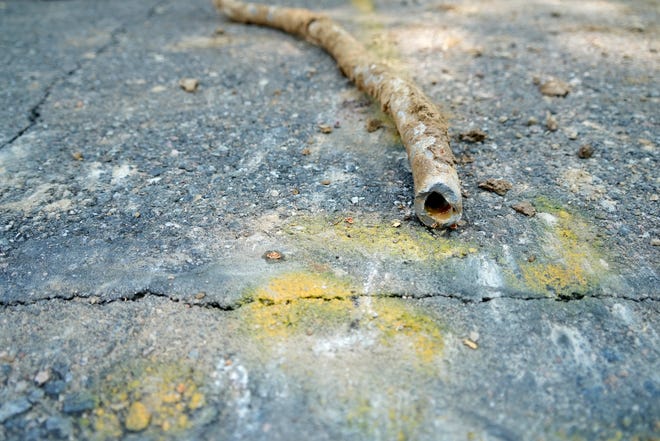
Lab-grown meat could have a worse carbon footprint than animal agriculture, study says
THE SPLIT, A NINE MINUTE RIDE. LETICIA, THANK YOU SO MUCH, BRIAN. NEW THIS MORNING, LAB GROWN MEAT MADE FROM ANIMAL CELLS IS THOUGHT TO BE BETTER FOR THE ENVIRONMENT. BUT A NEW STUDY FROM UC DAVIS SHOWS THAT LAB GROWN MEAT COULD POTENTIALLY HAVE A WORSE CARBON FOOTPRINT. JOINING US LIVE WITH THE DETAILS OF THIS NEW STUDY IS ONE OF THE AUTHORS, EDWARD SPANG. THANK YOU SO MUCH FOR JOINING US THIS MORNING. HAPPY TO BE HERE. EDWARD, TELL US THE TOP TAKEAWAYS FROM THE STUDY. YEAH. SO WE CONDUCTED A STUDY AND IT SHOWS THAT THERE’S A RISK THAT CULTURED MEAT ACTUALLY MIGHT BE WORSE FOR THE ENVIRONMENT IN SOME SITUATIONS THAN ANIMAL AGRICULTURE. MUCH OF THIS RISK IS THAT IF WE’RE USING PRODUCTION METHODS, TYPICAL OF THE PHARMACEUTICAL INDUSTRY, IT REQUIRES REALLY RESOURCE INTENSIVE INGREDIENTS TO GROW THIS MATERIAL. THEN IF WE GROW IT IN SORT OF A FOOD FOOD PRODUCTION ENVIRONMENT. WERE YOU SURPRISED BY WHAT YOU LEARNED WHEN YOU STARTED STUDYING THIS? DID YOU THINK THAT THIS WAS GOING TO BE THE OUTCOME? YOU KNOW, WE CONDUCTED THE STUDY BECAUSE WE REALLY WANTED TO DIG INTO WHAT THE CURRENT TECHNOLOGY LOOKS LIKE. A LOT OF THE STUDIES THAT ARE OUT THERE ARE VERY FORWARD LOOKING, YOU KNOW, THINKING ABOUT WHAT THE TECHNOLOGY MIGHT LOOK LIKE IN 5 OR 10 YEARS. BUT WE WERE CURIOUS AS TO WHAT IT LOOKS LIKE RIGHT NOW. AND AGAIN, OUR RESULTS SORT OF SHOWED THAT THERE COULD BE A RISK OF IT BEING WORSE THAN ANIMAL AGRICULTURE. BUT WE RAN A NUMBER OF SCENARIOS AND IN SOME SCENARIOS IT DID PERFORM BETTER THAN ANIMAL AGRICULTURE. SO THE STUDY OVERALL ISN’T REALLY AN ENDORSEMENT OF ONE OR THE OTHER. IT’S JUST A SORT OF A CAUTIONARY TALE THAT IF WE DON’T TRACK THIS INFORMATION CAREFULLY, WE MIGHT END UP IN A SITUATION WHERE WE’RE PRODUCING SOMETHING THAT ACTUALLY IS WORSE FOR THE ENVIRONMENT. HOW COMMON IS LAB GROWN MEAT RIGHT NOW? ARE A LOT OF PEOPLE ABLE TO PURCHASE IT AND CONSUME IT? AS WE SPEAK? IT’S NOT REALLY IN THE MARKETPLACE AT THIS POINT. I BELIEVE THERE’S ONE RESTAURANT IN SINGAPORE THAT’S SELLING CHICKEN NUGGETS WITH SOME LAB GROWN MEAT IN IT, BUT IT’S THE ENTIRE PRODUCT IS NOT LAB GROWN MEAT. AND IT’S VERY, VERY LIMITED IN ITS DISTRIBUTION RIGHT NOW. AND WHAT GOES INTO DOING A STUDY LIKE THIS? HOW MANY RESOURCES AND TIME DID YOU HAVE TO DEVOTE TO GET YOUR RESULTS? THIS STUDY ACTUALLY QUITE A BIT OF TIME. I WORKED WITH ONE OF MY GRADUATE STUDENTS, DEREK REISNER. HE DID A WONDERFUL JOB OF REALLY UNDERSTANDING THE PROCESS OF OF CULTURED MEATS AND THINKING ABOUT ALL THE INPUTS AND OUTPUTS REQUIRED IN THE PROCESS. SO WHEN I TALK ABOUT INPUTS, I’M THINKING ABOUT, YOU KNOW, THE INGREDIENTS THAT GO INTO FEED THESE ANIMAL CELLS. AND THAT’S GLUCOSE FOR ENERGY. SOME AMINO ACIDS TO GROW PROTEINS. AND WHEN YOU TRACK ALL THE INGREDIENTS GOING IN TO FEED THESE CELLS, IT’S QUITE RESOURCE INTENSIVE TO THINK ABOUT ALL THE FOOD WE NEED TO GROW TO FEED THE ANIMAL CELLS AND AS COMPANIES ARE THINKING ABOUT DOING THIS, WHAT DO YOU SUGGEST? THAT TO LIMIT THE CARBON FOOTPRINT WHEN PRODUCING THESE PRODUCTS? WELL, AS I SAID, THE INGREDIENTS ARE A MAJOR DRIVER HERE. SO WE’RE GOING TO HAVE TO THINK ABOUT HOW WE FEED THESE CELLS AND WHAT THEY’RE REALLY GOING TO REQUIRE IS A LOW COST INGREDIENT MIX THAT IS, YOU KNOW, NOT VERY RESOURCE INTENSIVE, BUT ALSO LOWERS THE RISK OF POTENTIALLY CONTAMINATE EATING THE BAT. WE REALLY WANT TO GROW THESE CELLS UNDER OPTIMAL CONDITIONS AND WE NEED TO FIND THE RIGHT BALANCE OF THOSE OPTIMAL CONDITIONS, BUT NOT HAVING INPUTS THAT ARE SO RESOURCE INTENSIVE. YOUR LAST MESSAGE FOR CONSUMERS WHEN THIS DOES FINALLY GO ON THE MARKET AND IT’S MORE WIDESPREAD, I WOULD SAY, YOU KNOW, THINK ABOUT THIS POTENTIAL NEW FOOD PRODUCT. THIS IS ENTIRELY NEW TO THE MARKET. IT’S EXCITING IN MANY WAYS, BUT WE DO WANT TO MAKE SURE THAT THERE’S ONGOING SCIENTIFIC STUDIES TO MAKE SURE THAT THIS THIS PRODUCT THAT’S TOUTED AS BEING VERY GOOD FOR THE ENVIRONMENT ACTUALLY IS. AND THAT’S JUST GOING TO REQUIRE FURTHER TECHNOLOGICAL ADVANCEMENT AND FURTHER STUDY. EDWARD SPANG WITH UC DAVIS, THANK YOU SO MUCH FOR SHARING YOUR STUDY WIT
Lab-grown meat could have a worse carbon footprint than animal agriculture, study says
Lab-grown meat made from animal cells is thought to be better for the environment. Now a study from the University of California, Davis, shows that lab-grown meat could potentially have a worse carbon footprint. One of the authors of the study, Edward Spang from UC Davis, said lab-grown meat isn't on the market in the United States yet, but there are things to consider before mass production.The study by UC Davis found the global warming potential to be four to 25 times greater than regular beef."We conducted a study, and it shows that there is a risk that cultured meat might be worse for the environment in some situations than animal agriculture," Sprang said. "Much of this risk is that if we are using production methods that are typical of the pharmaceutical industry, it requires really resource-intensive ingredients to grow this material than if we grow it in a food production environment." Watch the full interview in the video player above.
Lab-grown meat made from animal cells is thought to be better for the environment.
Now a study from the University of California, Davis, shows that lab-grown meat could potentially have a worse carbon footprint.
One of the authors of the study, Edward Spang from UC Davis, said lab-grown meat isn't on the market in the United States yet, but there are things to consider before mass production.
The study by UC Davis found the global warming potential to be four to 25 times greater than regular beef.
"We conducted a study, and it shows that there is a risk that cultured meat might be worse for the environment in some situations than animal agriculture," Sprang said. "Much of this risk is that if we are using production methods that are typical of the pharmaceutical industry, it requires really resource-intensive ingredients to grow this material than if we grow it in a food production environment."
Watch the full interview in the video player above.
Source link








